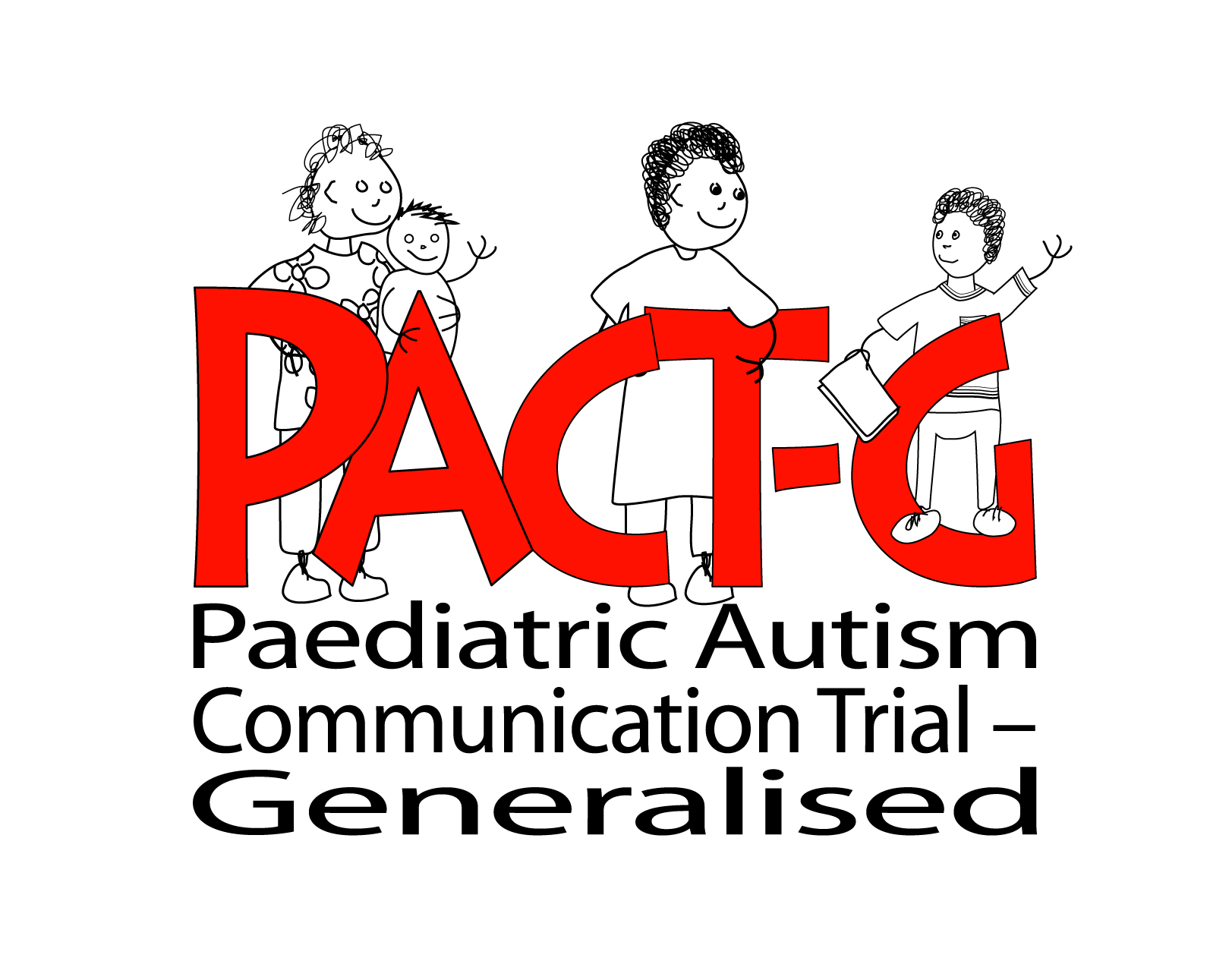About the PACT-G study
Trial background
The Paediatric Autism Communication Trial – Generalised (PACT-G) is a research study looking at whether PACT-G therapy, a social communication therapy for children with autism, helps improve autism symptoms. This trial builds on the work of our original PACT study (2006-2009) which was conducted in Manchester, London and North-East England with children aged between 2-5 years. Parents excellent response to this intervention led to demonstrated significant improvement in their child's social communication in return. However, there was reduced improvement when the child communicated with another adult outside the family - any communication improvements gained did not seem to generalize. Children with autism find it difficult to transfer skills learned in one context into another, so therapeutic gains may not generalise. In addition, autism is a long-term disorder and repeated interventions will probably be needed, adapted to the child’s developmental needs. You can read more about the original PACT study here - http://www.bbmh.manchester.ac.uk/pact. This was an influential trial which formed part of the evidence behind the recent NICE guidelines on autism treatment.
The PACT 7-11 study was a follow-up of families involved in the original PACT trial (83% of which took part). This was an invaluable opportunity to follow up these children and to understand more about what factors in the pre-school years affect how children develop into middle childhood (an under-researched area in autism). We look forward to sharing our results with you in the near future. You can read more about the PACT 7-11 study here – http://www.bbmh.manchester.ac.uk/pact/PACT7-11/
For the PACT-G study, referral will again be in Manchester, London and North-East England via clinical specialists, education professionals and consented databases. We will be recruiting families with either a preschool, or school-age child, between 2-11 years who has been diagnosed with autism. The initial 6-month external pilot stage, prior to the main trial, has already commenced and finishes in December, 2016. We aim to recruit 24 families. The main PACT-G trial (2017-2018) will recruit around 250 families. Families will be involved in the main trial for one year.
What is the PACT-G therapy?
This builds on our original clinic-based PACT therapy with parents to improve the social communication of preschool children with autism. Caregivers were coached, using video-feedback, to interact with their child using strategies that facilitated communication development in the child. This approach was found to be very effective in increasing the quality of parental communicative responses to the child, which in turn, led to increased child-initiated communications with the parent.
PACT-G therapy retains these effective elements; but adds new features to test specific ways to increase the transfer of child communication gains into everyday home and education contexts. The therapy begins with the parent at home and parental techniques are integrated into daily routines and play to assist generalisation of new skills development in the home setting.
In addition, the range of adults involved in training is widened to also include education staff in school settings. This extends the application of the intervention into the primary school years. To date, autism intervention studies have largely been limited to episodic interventions, usually in pre-school. However, communication skills continue to emerge and develop beyond the pre-school years and social communication skills in the early school age period are strong predictors for later development. The developmental nature of autism thus argues strongly for a developmentally sustained approach to intervention into middle childhood.
What are the aims?
We will test the impact of the PACT-G social communication intervention in both the home and education settings; and the cumulative impact of this in enhancing overall symptom outcomes. This will be a unique and, innovative opportunity, to further understand the processes and facilitation of symptom change in autism.
The PACT-G intervention is appropriate for children in middle childhood, as well as preschool, and we will test it in children up to 11 years. Not only will this allow us to test the impact of the intervention across this age span, it will also enable us to analyse the outcomes along with those from our previous cohorts, who were recruited in the same way and are of equivalent ages (2-5 years in the PACT study and 7-11 years in the other study). ‘Pooling’ the data in this way gives us a unique opportunity to study the effect of intervention or no intervention across different ages, and also to draw conclusions about whether there would be an added effect if a preschool intervention was followed by a middle childhood one. This analysis is uniquely possible just because of the presence of our previous study cohorts and will be novel for the field.
Across each of the three settings (clinic assessment, home and education), before, during and after intervention, we will assess the child’s interaction with parent or teacher, plus an objectively rated measure of autism symptoms. From this, we will be able to make a novel detailed study of the process by which the child generalises skills across contexts, and whether our intervention improves this generalisation. We think that delivering the therapy to both the parent and to a key person, such as a learning support assistant, in the child’s nursery/ school will help. We also think that working with the parent and the school staff in their own settings, i.e. at home and in nursery/school rather than in the clinic, will help the children to use any new skills more widely.
Recent press release
You can read more about the PACT-G study in a recent NIHR press release here.
